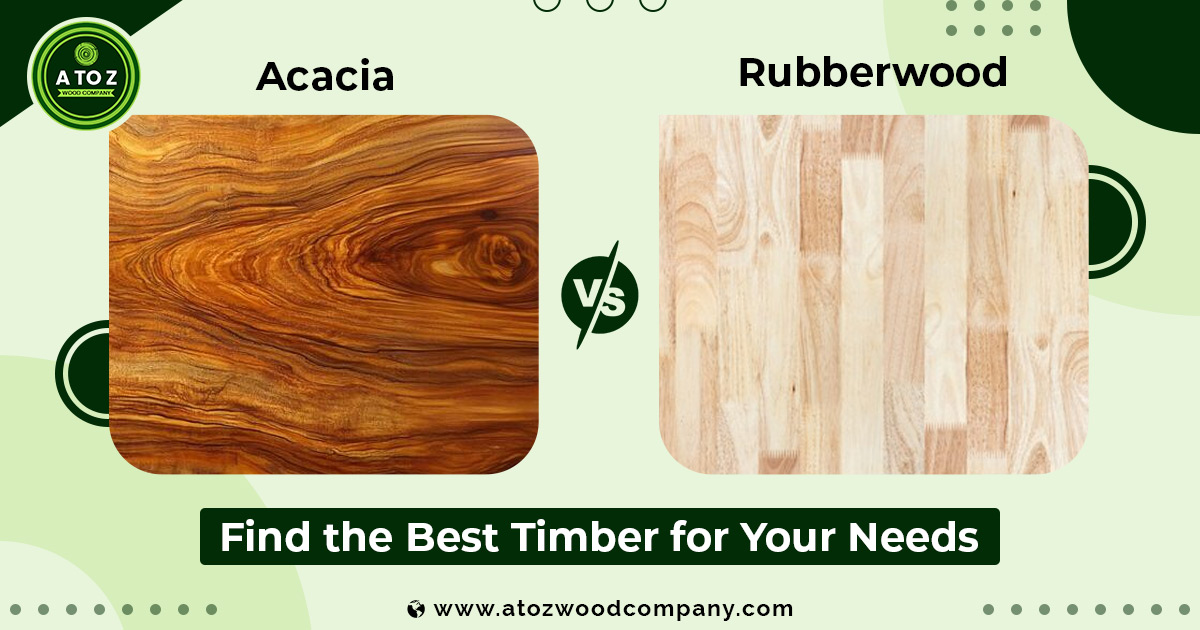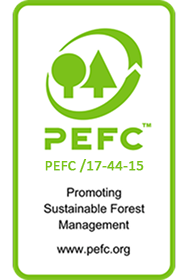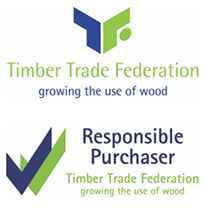Both acacia and rubberwood are durable, sustainable, and affordable hardwood options—but they differ significantly in texture, strength, and appearance. Understanding their unique properties can help buyers, woodworkers, and manufacturers make informed decisions.
In this comprehensive comparison, we’ll explore the origins, characteristics, advantages, disadvantages, and uses of Acacia vs. Rubberwood, helping you determine which one best suits your project.
Overview of Acacia Wood
It is a dense hardwood sourced from fast-growing Acacia trees, primarily found in Asia, Africa, and Australia. Known for its rich grain patterns, golden-brown hues, and exceptional hardness, Acacia has become a popular choice for both indoor and outdoor furniture.
Key Features of Acacia
-
Scientific name: Acacia mangium, Acacia auriculiformis, and others
-
Color: Ranges from light amber to deep reddish-brown
-
Grain pattern: Varies from straight to wavy, often striking and decorative
-
Density: 700–850 kg/m³ (high density)
-
Durability: Naturally resistant to water, decay, and insects
-
Workability: Easy to machine and polish but requires pre-drilling for screws
Popular Uses of Acacia Wood
-
Premium indoor and outdoor furniture
-
Flooring and paneling
-
Kitchen countertops and cutting boards
-
Boat decks and garden benches
-
Decorative veneers
Overview of Rubberwood
Also known as Hevea brasiliensis, originates from the rubber tree plantations of Southeast Asia. After 20–25 years of latex production, the trees are harvested for timber, making Rubberwood a sustainably recycled and eco-friendly material.
Key Features of Rubberwood
-
Scientific name: Hevea brasiliensis
-
Color: Light cream to pale yellow
-
Grain pattern: Straight and uniform with a smooth texture
-
Density: 560–650 kg/m³ (moderate density)
-
Durability: Moderately durable, best suited for indoor use
-
Workability: Easy to cut, glue, and finish
Popular Uses of Rubberwood
-
Indoor furniture (tables, chairs, cabinets)
-
Wooden toys and kitchenware
-
Plywood and veneered panels
-
Mouldings and small turned articles
Acacia vs. Rubberwood: Head-to-Head Comparison
| Feature | Acacia Wood | Rubberwood |
|---|---|---|
| Origin | Naturally grown hardwood | Plantation-grown byproduct of latex trees |
| Color | Warm brown to deep reddish tones | Pale cream to yellowish-white |
| Grain & Texture | Rich, varied, and wavy grain | Straight and uniform grain |
| Hardness | Very hard (1,700+ Janka rating) | Medium hard (900–1,000 Janka rating) |
| Durability | Highly durable, weather-resistant | Moderately durable; best for interiors |
| Workability | Can be hard to nail but finishes beautifully | Easy to machine and glue |
| Resistance to Moisture | Naturally water-resistant | Requires protective finishing |
| Sustainability | Harvested selectively; eco-friendly | 100% sustainable and renewable |
| Cost | Slightly higher due to density and beauty | More affordable and readily available |
Acacia Wood: Advantages and Disadvantages
✅ Advantages
-
Exceptional hardness and durability
-
Naturally resistant to termites, fungi, and moisture
-
Distinctive grain patterns add premium appeal
-
Ideal for outdoor and heavy-use furniture
-
Long lifespan with minimal maintenance
❌ Disadvantages
-
Can warp if not properly dried
-
Heavier and harder to cut or drill
-
Higher cost compared to plantation woods
Rubberwood: Advantages and Disadvantages
✅ Advantages
-
Eco-friendly and sustainable (recycled from latex trees)
-
Affordable and easy to work with
-
Smooth, uniform texture ideal for painting or staining
-
Good for indoor furniture and cabinetry
❌ Disadvantages
-
Prone to warping or swelling in high humidity
-
Not suitable for outdoor use
-
Requires chemical treatment to prevent insect attack
Sustainability Factor: Eco-Friendly Comparison
Both Acacia and Rubberwood support sustainable forestry practices, but in different ways:
-
Acacia trees grow rapidly and can be replanted, making them a renewable hardwood source. Many suppliers, like AtoZ Wood Company, follow responsible harvesting—cutting only mature trees while preserving biodiversity.
-
Rubberwood, on the other hand, is a byproduct of the latex industry. Once latex production declines, the wood is repurposed for furniture instead of being burned or discarded—making it one of the most sustainable commercial hardwoods available.
Which Wood Is Better for Furniture?
The right choice depends on your project’s function, style, and environment:
-
Choose Acacia if you want:
-
Outdoor or high-moisture furniture
-
Long-lasting durability and strength
-
A natural, luxurious look with striking grain
-
-
Choose Rubberwood if you want:
-
Affordable indoor furniture
-
Eco-friendly material with uniform appearance
-
Easy-to-work, lightweight wood for mass production
-
Price Comparison: Acacia vs. Rubberwood
-
Acacia wood price is generally higher, reflecting its density, durability, and premium aesthetic.
-
Rubberwood price is more budget-friendly, making it ideal for large-scale manufacturing or cost-sensitive projects.
At AtoZ Wood Company, we supply both Acacia and Rubberwood in bulk and custom orders—ensuring every shipment meets international quality and sustainability standards. Whether you’re a furniture manufacturer, distributor, or contractor, our team can help you choose the ideal wood based on your project’s needs.
 +237 681 25 6934
+237 681 25 6934




